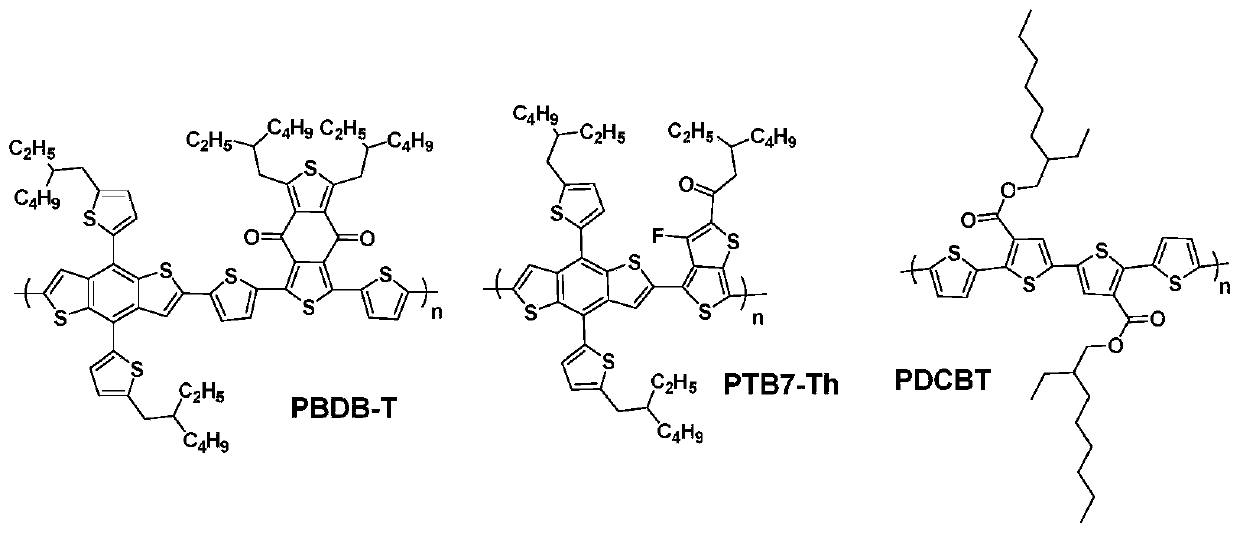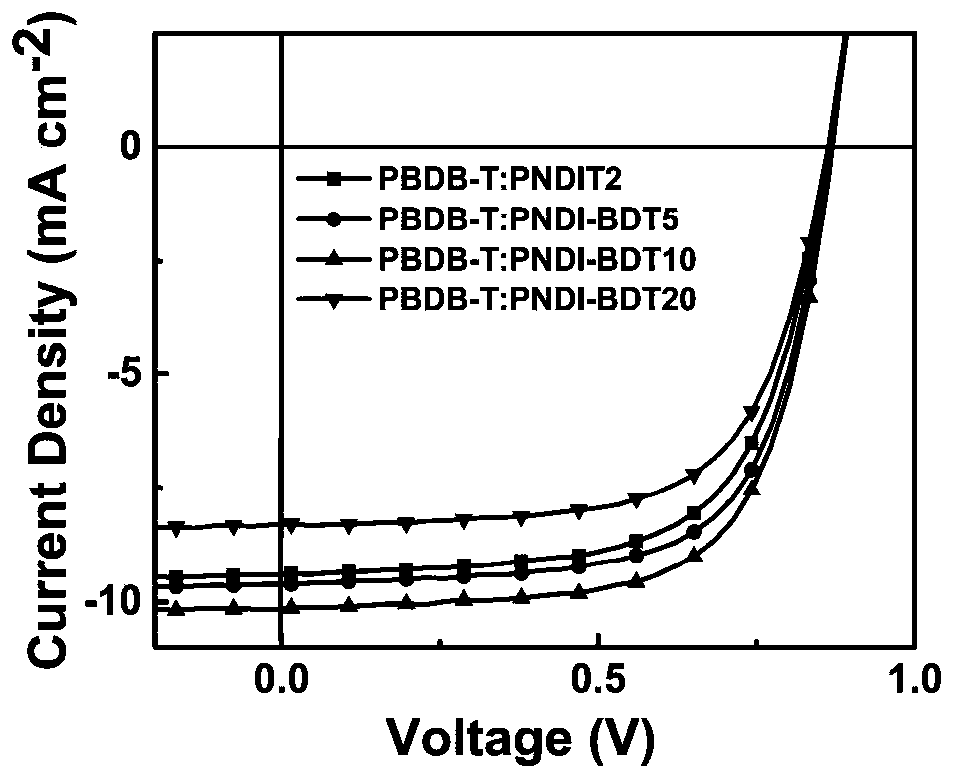Two-dimensional benzo dithiophene group doped ternary random polymer acceptor material, and preparation method and applications thereof
A benzodithiophene, polymer technology, applied in the field of organic photovoltaic materials, can solve problems such as affecting charge transfer, inhibiting device energy conversion efficiency, affecting contact, etc., to improve planarity, excellent energy conversion efficiency, and optimize charge transfer. Effect
- Summary
- Abstract
- Description
- Claims
- Application Information
AI Technical Summary
Problems solved by technology
Method used
Image
Examples
Embodiment (1
[0047] Example (1): Using PBDB-T as a polymer donor material and PNDI-BDTx as a polymer electron acceptor material to prepare a forward structure all-polymer solar cell device. Device short-circuit current density-voltage curve such as figure 1 As shown, Table 1 lists the solar cell device performance of the embodiment (1), and the average energy conversion efficiency is obtained from at least 15 independent devices.
[0048] Device performance parameter in the embodiment (1) of table 1
[0049]
Embodiment (2
[0050] Example (2): Using PTB7-Th as a polymer donor material and PNDI-BDTx as a polymer electron acceptor material to prepare a forward structure all-polymer solar cell device. Device short-circuit current density-voltage curve such as figure 2 As shown, Table 2 lists the solar cell device performance of embodiment (2), and the average energy conversion efficiency is obtained from at least 15 independent devices.
[0051] Device performance parameter in the embodiment (2) of table 2
[0052]
[0053]
Embodiment (3
[0054] Example (3): Using PDCBT as a polymer donor material and PNDI-BDTx as a polymer electron acceptor material to prepare a forward structure all-polymer solar cell device. Device short-circuit current density-voltage curve such as image 3 As shown, Table 3 lists the solar cell device performance of embodiment (3), and the average energy conversion efficiency is obtained from at least 15 independent devices.
[0055] Device performance parameter in the embodiment (3) of table 3
[0056]
[0057] Among the three specific examples, the device energy conversion efficiency of the polymer acceptor PNDI-BDT10 doped with 10mol% two-dimensional benzodithiophene groups is the best, which proves that this method can effectively improve the polymer acceptor with PNDIT2 Device efficiency of all-polymer solar cells.
PUM
 Login to View More
Login to View More Abstract
Description
Claims
Application Information
 Login to View More
Login to View More - R&D
- Intellectual Property
- Life Sciences
- Materials
- Tech Scout
- Unparalleled Data Quality
- Higher Quality Content
- 60% Fewer Hallucinations
Browse by: Latest US Patents, China's latest patents, Technical Efficacy Thesaurus, Application Domain, Technology Topic, Popular Technical Reports.
© 2025 PatSnap. All rights reserved.Legal|Privacy policy|Modern Slavery Act Transparency Statement|Sitemap|About US| Contact US: help@patsnap.com



